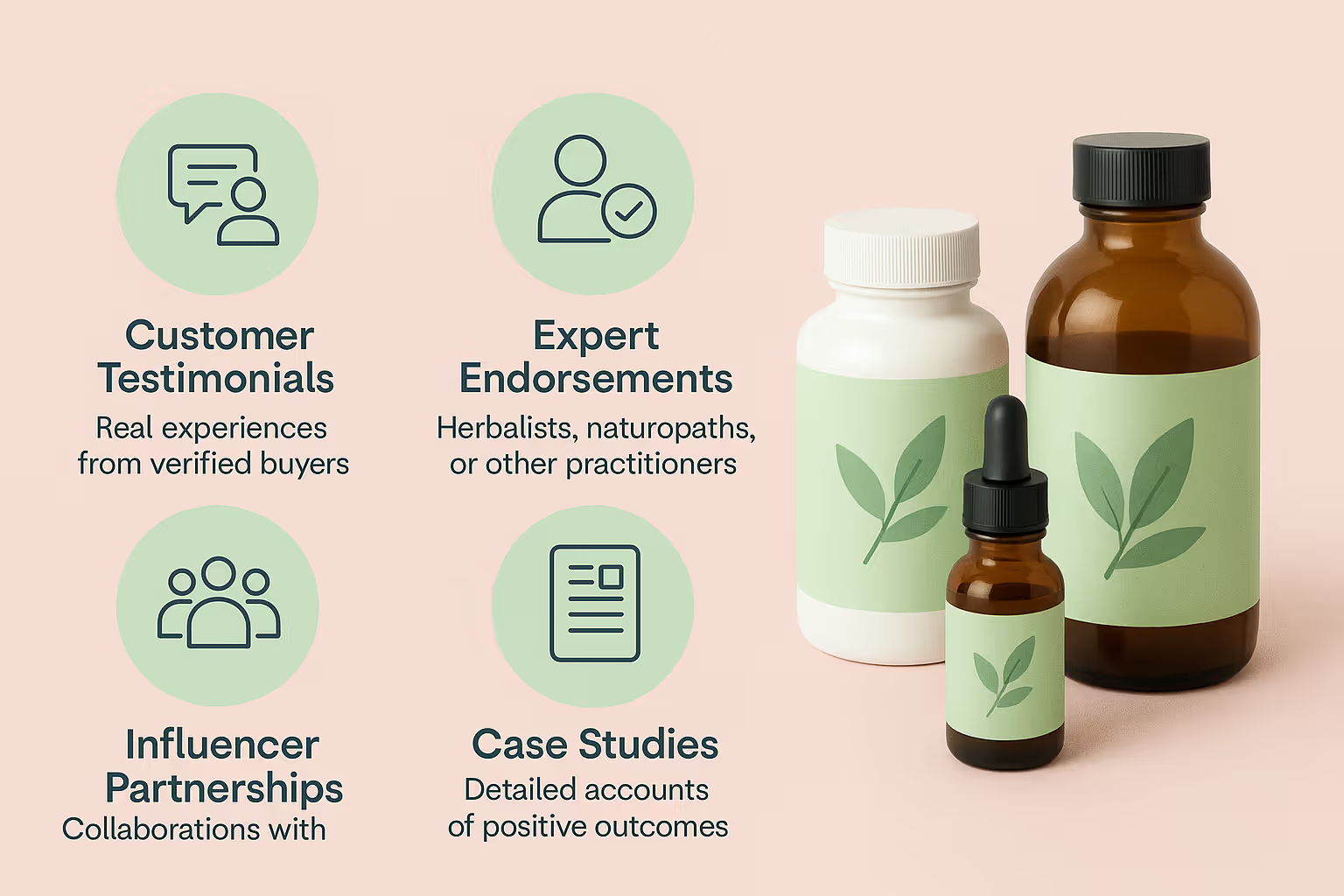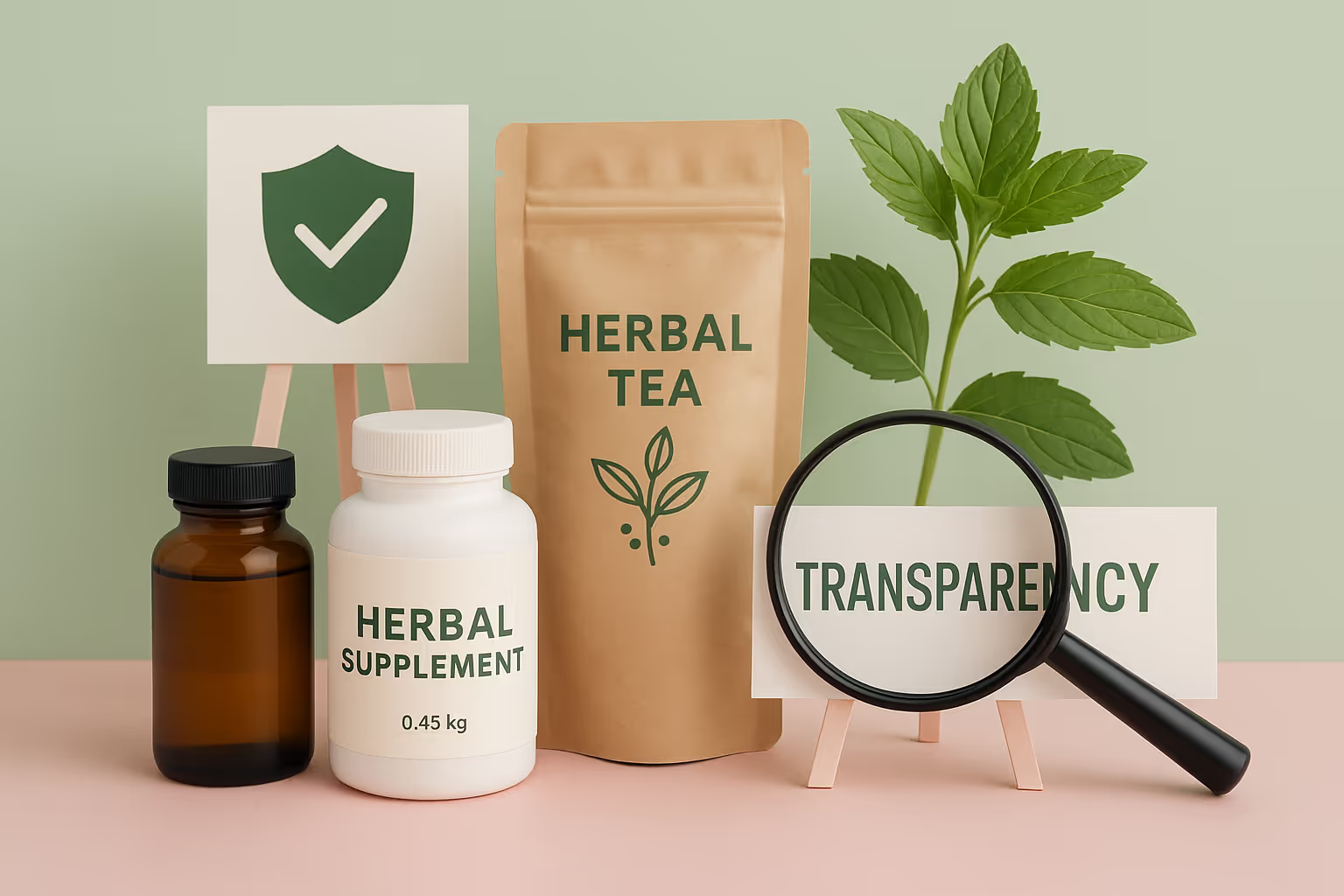What Are the Best Marketing Strategies for Herbal Products? Content Marketing

In a market drawn to natural alternatives, herbal products are booming. The global herbal supplements market is set to surpass $10 billion by 2025.
Marketing these products requires unique strategies that go beyond conventional tactics. Authenticity, education, and trust are key to reaching conscious consumers.
This guide on the best marketing strategies for herbal products helps brands stand out, build loyalty, and grow in the competitive natural health space.
Ultimate Content Marketing Strategies for Herbal Products: #1 Educational Content
Perhaps the most powerful marketing strategy for herbal products is educational content that builds credibility and trust.
Creating Valuable Educational Resources
Herbal products often require more explanation than conventional consumer goods. Consumers want to understand:
- What the herbs contain
- How they work in the body
- Traditional and modern uses
- Scientific evidence supporting claims
- Proper usage guidelines and dosages
Educational content that addresses these points not only serves marketing purposes but also fulfills an ethical obligation to inform consumers properly about natural products.
Content Formats That Perform Well
- Blog Articles: In-depth explorations of specific herbs, their benefits, and uses
- Informative Videos: Visual demonstrations of product sourcing, production, or usage
- Infographics: Visual representations of complex herbal information
- E-books and Guides: Comprehensive resources on specific health topics
- Webinars: Expert-led sessions on herbal traditions and applications
A particularly effective approach is creating an "Herbal Encyclopedia" section on your website that becomes a go-to resource for information, establishing your brand as an authority while driving organic traffic through search.
Storytelling and Brand Authenticity
The herbal product market is saturated with options, making authentic brand storytelling essential for differentiation.
Crafting Your Herbal Brand Story
Effective herbal product stories typically include:
- Origin Story: How and why the brand was created
- Sourcing Narrative: Where and how ingredients are obtained
- Tradition Connection: Links to historical herbal practices
- Mission Statement: The purpose beyond profit
- Transparency Elements: Production methods and quality control
Showcasing Authenticity
Consumers are increasingly skeptical of marketing claims, particularly in the natural products space. Authenticity can be demonstrated through:
- Behind-the-Scenes Content: Production facility tours, harvesting footage
- Farmer and Supplier Profiles: Introducing the people who grow your herbs
- Formulator Interviews: Conversations with herbalists or scientists creating products
- Quality Testing Information: Details about purity and potency verification
- Honest Discussion of Limitations: Transparency about what your products can and cannot do
Social media platforms like Instagram and TikTok are particularly effective for authentic storytelling through visual content that showcases the natural origins of your products.
Creating content that highlights your sourcing methods and quality control processes can significantly impact consumer trust in your brand.
Check our strategy blueprint showing exactly which formats match your audience’s mindset and how to build trust at every stage.
Social Proof and Testimonial Marketing

For herbal products, social proof is particularly powerful because consumers often rely on others' experiences when trying natural remedies.
Effective Types of Social Proof
- Customer Testimonials: Real experiences from verified buyers
- Expert Endorsements: Herbalists, naturopaths, or other practitioners
- Influencer Partnerships: Collaborations with wellness-focused content creators
- Case Studies: Detailed accounts of positive outcomes
- User-Generated Content: Customer photos and videos using your products
Building a Testimonial Strategy
- Systematic Collection: Implement post-purchase follow-ups requesting feedback
- Verification Process: Ensure the authenticity of all testimonials
- Compliance Awareness: Understand regulations regarding health claims
- Diverse Representation: Gather testimonials from various customer demographics
- Context Provision: Include relevant details like usage duration and specific benefits
Pro tip: When partnering with influencers for herbal products, prioritize those with demonstrated knowledge of botanicals over those with the largest following. A smaller, more engaged audience with genuine interest in herbalism will yield better results than a massive reach among uninterested followers.
Strategic Digital Marketing Channels
Different digital platforms offer unique advantages for herbal product marketing.
Social Media Platform Strategy
Each platform serves distinct purposes in herbal product marketing:
- Instagram: Showcase visually appealing aspects of herbs and products
- Pinterest: Create educational pins about herb benefits and uses
- TikTok: Short educational videos or behind-the-scenes glimpses
- Facebook: Build community and share more detailed content
- YouTube: Host longer educational videos, interviews, and demonstrations
Promoting health products on TikTok has become increasingly effective for reaching younger consumers interested in natural wellness. The platform's visual nature allows brands to demonstrate the natural origins and benefits of herbal products in engaging ways.
Similarly, Facebook remains an important channel for building communities around herbal products, particularly for reaching older demographics who may have a long-standing interest in botanical remedies.
Email Marketing for Herbal Products
Email remains exceptionally effective for herbal product marketing when properly executed:
- Segmentation Strategy: Divide subscribers by interests or health concerns
- Educational Sequences: Create an automated series explaining herbal concepts
- Seasonal Relevance: Align content with seasonal health needs
- Dosage and Usage Reminders: Help customers use products properly
- Complementary Herb Information: Educate about beneficial combinations
Search Engine Optimization (SEO)
For herbal products, SEO should focus on:
- Herb-Specific Keywords: Target searches for individual botanical ingredients
- Problem-Solution Queries: Capture searches for natural solutions to specific issues
- Educational Terms: Target information-seeking behavior around herbs
- Local Search Optimization: For physical locations selling herbal products
- Voice Search Consideration: Optimize for natural language questions
Building Trust Through Transparency and Compliance

The herbal product industry faces unique challenges regarding regulations and consumer trust.
Regulatory Compliance Marketing
While adhering to regulations is mandatory, transparent communication about compliance can become a marketing advantage:
- Clear Ingredient Disclosure: Complete and accessible ingredient lists
- Appropriate Claim Language: Careful wording that stays within regulatory boundaries
- Quality Certification Highlights: Featuring third-party testing and certifications
- Educational Context: Providing historical and traditional use information
- Disclaimer Transparency: Incorporating required disclaimers in a straightforward manner
Quality Assurance as Marketing
For herbal products, quality control processes themselves can become powerful marketing messages:
- Testing Protocols: Explaining how products are tested for purity and potency
- Sourcing Standards: Detailing requirements for raw material suppliers
- Production Methods: Highlighting extraction techniques that preserve beneficial compounds
- Sustainability Practices: Demonstrating responsible harvesting and production
- Shelf-Life Information: Transparency about product stability and storage
Understanding the licensing requirements for selling herbal products is essential not only for legal compliance but also for building consumer trust.
Brands that communicate their compliance with relevant regulations position themselves as more trustworthy in the marketplace.
Holistic Wellness Positioning
Increasingly, successful herbal product brands position their offerings within a broader wellness context rather than as isolated products.
Lifestyle Integration Marketing
Showing how herbal products fit into daily wellness routines creates more compelling marketing:
- Ritual Creation: Positioning products as part of daily self-care practices
- Complementary Approaches: Pairing herbal products with other wellness activities
- Seasonal Wellness: Aligning marketing with natural cycles and seasonal needs
- Whole-Person Perspective: Addressing multiple aspects of well-being
- Community Connection: Fostering belonging through shared wellness values
Collaboration and Cross-Promotion
Herbal products benefit from strategic partnerships:
- Practitioner Partnerships: Collaborations with herbalists, naturopaths, or nutritionists
- Complementary Brand Alliances: Cross-promotions with aligned wellness companies
- Wellness Center Relationships: Presence in holistic health spaces
- Retreat and Event Sponsorships: Supporting wellness gatherings
- Community Classes: Offering educational sessions in partnership with other organizations
Sustainable Marketing for Long-Term Success
For herbal product brands, sustainable marketing practices align with core values and create lasting business success.
Environmental Responsibility Messaging
When authentic, environmental commitments resonate strongly with herbal product consumers:
- Regenerative Sourcing: Highlighting practices that improve ecosystems
- Packaging Decisions: Showcasing eco-friendly packaging choices
- Carbon Footprint Awareness: Addressing transportation and production impacts
- Waste Reduction Initiatives: Demonstrating commitment to minimizing waste
- Conservation Support: Protecting the natural habitats of medicinal plants
Building a Sustainable Business Model
Beyond marketing tactics, successful herbal brands implement sustainable business practices:
- Customer Retention Focus: Prioritizing long-term relationships over one-time sales
- Educational Investment: Creating lasting value through knowledge sharing
- Community Building: Fostering connections among customers and stakeholders
- Adaptive Messaging: Evolving communication as science and trends develop
- Ethical Growth Planning: Scaling in ways that maintain quality and values
For brands serious about scaling their herbal product business, partnering with a reliable fulfillment provider becomes essential to maintaining quality and consistency as demand grows.
Sharing Knowledge: Layer Botanical Education into Post-Purchase Content
Most herbal brands focus on education before the sale, but post-purchase content is where loyalty grows. Follow-up emails with usage tips, herb origins, and lifestyle pairings deepen trust and reduce confusion.
Short videos on preparation and dosage help customers use products correctly and confidently. This ongoing support turns one-time buyers into long-term advocates.
In a $10 billion+ herbal market built on trust and tradition, this strategy is a game-changer. Educating after checkout sets your brand apart from competitors who stop at the sale.
It builds credibility, encourages repeat purchases, and reinforces product value. True herbal marketing success continues well beyond the first conversion.
Taking Your Herbal Products to Market: Next Steps
Marketing herbal products takes a thoughtful mix of education, authenticity, and smart channel selection. The best strategies respect botanical traditions while embracing modern digital tools.
Focus on understanding your audience, creating helpful content, and telling an authentic brand story. Build trust through transparency and position your products within broader wellness lifestyles.
FAQ
Related blogs

Influencer Pricing Calculator: Find Your Fair Rate for Posts, Reels & Stories
.avif)
How To Market Pet Products Through Storytelling: Win Attention, Build Trust, and Boost Sales Naturally
.avif)
How To Market Coffee To Gen Z: The High-Impact Blueprint Every Brand Needs
.avif)

